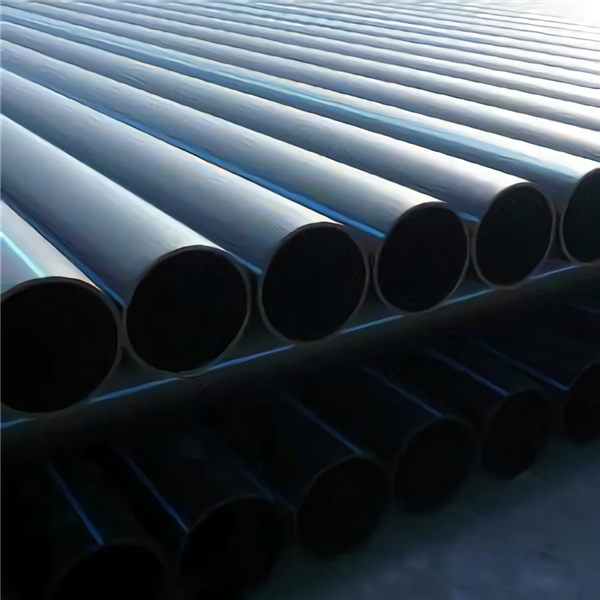វិច្ឆិកា . 30, 2024 09:44 Back to list
PVC Pipe Fittings for Efficient Plumbing Solutions and Reliable Connections
Understanding PVC Pipe Fittings A Comprehensive Overview
Polyvinyl Chloride (PVC) is one of the most widely used materials in plumbing and construction due to its durability, corrosion resistance, and ease of installation. Among the various components associated with PVC, pipe fittings play a crucial role in ensuring the proper functionality and flow of liquids in piping systems. This article delves into the intricacies of PVC pipe fittings, their types, applications, advantages, and installation techniques.
What Are PVC Pipe Fittings?
PVC pipe fittings are components used to connect lengths of PVC pipes or to change the direction, size, or flow within a piping system. They are essential in residential, commercial, and industrial applications, serving as connectors that allow for versatile configuration and routing of plumbing, drainage, irrigation, and ventilation systems.
Types of PVC Pipe Fittings
There are several types of PVC pipe fittings, each designed for specific purposes. The most common types include
1. Elbows Used to change the direction of the piping. Available in various angles (e.g., 45-degree, 90-degree), elbows allow for bends in the piping system without compromising the flow.
2. Tees These fittings are shaped like the letter 'T' and allow for branching off in different directions from a main pipe. Tees can come in unequal or equal sizes, depending on the application.
3. Couplings Couplings are used to connect two sections of pipe together. They can be either regular or slip, enabling easy connections without requiring additional fittings.
4. Adapters An adapter is designed to connect two dissimilar pipes or fittings, such as transitioning from PVC to another material (like metal) or different-sized pipes.
5. Caps and Plugs Caps are used to seal the end of a pipe, while plugs can close off the opening of a fitting. Both help prevent leaks and blockages in a piping system.
6. Reducers These fittings allow for a transition from a larger pipe to a smaller pipe or vice versa, helping to regulate flow conditions as needed.
Applications of PVC Pipe Fittings
PVC pipe fittings are used in various industries and applications. Some common uses include
- Plumbing and Drainage Systems PVC fittings facilitate the safe transport of water and wastewater, reducing the risk of leaks and ensuring efficient flow. - Irrigation In agricultural and landscaping applications, PVC pipe fittings are frequently employed to create irrigation systems, delivering water effectively to crops and gardens.
pvc pipe fitting

- HVAC Systems In heating, ventilation, and air conditioning systems, these fittings are utilized to connect ductwork and piping, ensuring proper airflow and efficiency.
- Chemical Transfer Due to their chemical resistance, PVC fittings are often used to transfer corrosive chemicals in industrial settings, keeping the system safe and functional.
Advantages of PVC Pipe Fittings
Choosing PVC pipe fittings comes with several advantages
- Durability PVC fittings are resistant to corrosion, rust, and chemical damage, ensuring a long lifespan compared to metal fittings.
- Lightweight PVC is much lighter than metal, which makes transportation and installation simpler and less labor-intensive.
- Cost-Effective Generally more affordable than metal counterparts, PVC fittings provide an economical option for many plumbing and construction applications.
- Ease of Installation PVC fittings are designed for straightforward installation, often requiring only simple tools and minimal plumbing skills.
Installation Tips for PVC Pipe Fittings
Proper installation is essential for ensuring the reliability of a PVC piping system. Here are a few installation tips
1. Clean Cut Ensure all pipe ends are cut cleanly and square. Use a pipe cutter or saw designed for PVC to avoid jagged edges.
2. Use PVC Cement When joining fittings and pipes, apply a suitable PVC cement to both the pipe and fitting for a secure bond. Follow the manufacturer's guidelines regarding drying times.
3. Avoid Over-tightening If using threaded fittings or adapters, avoid over-tightening as this can cause damage to the fittings or pipes.
4. Test for Leaks After installation, run water through the system to check for leaks. Fix any issues before covering or burying pipes.
In conclusion, PVC pipe fittings are integral components in modern plumbing and construction. Their diverse types and applications, along with their advantages of durability and cost-effectiveness, make them a popular choice in many settings. Understanding how to properly use and install these fittings is essential for anyone involved in plumbing and construction projects.
-
PP U-channel: Chemical-Resistant, Lightweight & Durable
NewsAug.10,2025
-
Transparent PVC Pipe: Clear Flexible Tubing for Fluids
NewsAug.09,2025
-
Durable PP Rigid Sheet: Versatile & High-Quality Plastic Panels
NewsAug.08,2025
-
Premium Glossy PP Rigid Sheet – Durable & Versatile
NewsAug.07,2025
-
High-Quality HDPE Sheet | Durable Plastic Panels
NewsAug.06,2025
-
High-Precision PVC Rigid Sheets for Vacuum Forming | AI-Optimized
NewsAug.05,2025

